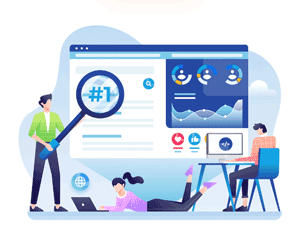Generative artificial intelligence is no longer just a buzzword — it’s becoming part of how people learn, work, create, and even cope with life’s biggest challenges. While governments worldwide debate how to regulate its use, everyday Australians are finding countless ways to integrate it into their routines — and not all of them are positive.
Educators Turning AI into a Teaching Tool
Some teachers and tutors say generative AI has become an unexpected ally. George, a tutor in Western Australia, uses AI to double-check facts and craft example stories for students — although he still edits the content to add accuracy and depth. Cam, a Queensland teacher, even uses AI as a virtual tutor for learning rare languages like Farsi and to create worksheets that free up time for more engaging classroom activities.
In fact, a recent study by Queensland University of Technology in 2024 revealed that over 70% of university staff across 17 Australian universities are using AI for work-related tasks.
Rising Concerns About Academic Quality
Yet not everyone in education is thrilled. Jane, a university tutor, worries that generative AI is hurting students’ critical thinking. She says she now uses AI herself — not for teaching, but to catch AI-generated plagiarism in student assignments.
ACT student Jemy shares a similar fear, arguing that over-reliance on AI could weaken people’s ability to think deeply — a vital skill that education is supposed to nurture.
Parents and Students Finding Unexpected Benefits
Not all the stories are cautionary tales. Tim, a Victorian parent, used AI to set up a customised tutor for his daughter’s Year 12 subjects. Tania, another parent, says AI gave her kids new ideas about possible study and career paths — and even highlighted risks of pursuing jobs that might not exist in a few years.
Workplaces Divided: Time Saver or Trouble?
At work, people’s experiences vary wildly. Chris, a software developer from the ACT, calls AI his “personal assistant”, helping him write and test code faster, and even draft emails that match his tone.
But Steven, who works in disability support in Victoria, says AI-generated shift notes have caused confusion and misinformation — more hassle than help. Meanwhile, an anonymous developer says pushing AI into every product is burning out teams and frustrating staff who would rather focus on users’ needs.
Creatives Wrestle with AI’s Impact on Art
For writers and artists, generative AI remains a lightning rod. Annabelle, a Victorian writer, feels her work has been devalued and used without permission to train AI models. By contrast, April, an artist, uses AI to spark new ideas and help run her creative business, seeing it as a tool to boost — not replace — her skills.
Others, like Michael in WA, have even used AI to fulfil long-held dreams. AI helped him transform his poetry into full-fledged songs, letting him share his music with the world.
Using AI for Support and Reflection
Some people turn to AI for mental health support. Simon from Tasmania used AI journalling to process grief after losing a child, though he warns about the risk of developing unhealthy emotional attachments to AI. Sarah, a single mum in Queensland, found AI therapy a lifeline when she could no longer afford traditional counselling.
Mundane Tasks Made Easier
For many, AI has simply become a handy helper for everyday chores. Readers say they use it to find recipes, plan meals, design home decor, or even guide mindfulness sessions. Kelly, an AI developer from NSW, built her own AI “life architect” to streamline decisions and save hours each week.
These real-life stories show that generative AI is reshaping how we learn, work, create, and cope — but also raising important questions about how much control we really have. How is AI changing your life? Share your story with us in the comments below.

















